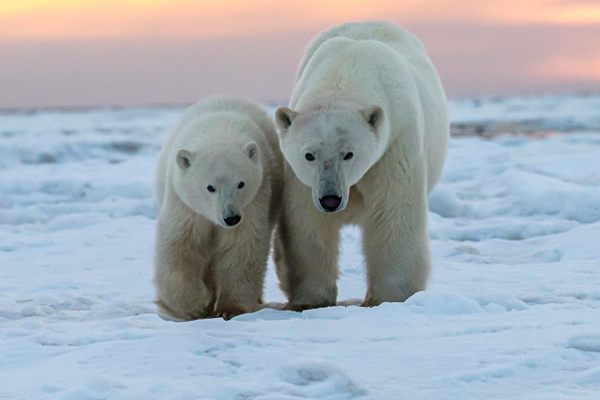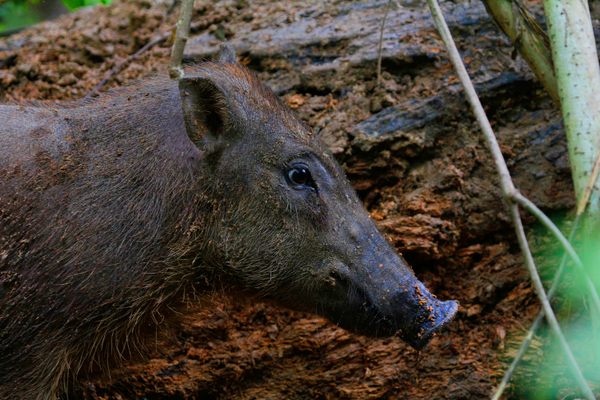Donkeys in All Directions: The Global History of an Adorable Beast of Burden
Donkey in British Columbia (photograph by bagsgroove/Flickr user)
Stubborn, hard-working, and charming, modern donkeys too often live lives of uncelebrated drudgery not much different than their ancestors who were first domesticated by the Egyptians 5,000 years ago. Because the unflappable beasts could carry loads disproportionate with their small size, Egyptians, who had previously hunted wild asses for meat, began using them to transport goods across great distances. Archaeologists believe this occurred as agrarian societies started to make long-distance trade central to their civilizations. As people traveled and traded, donkeys eventually became ubiquitous around the world. Here are some of the most fascinating locales for the adorable and sturdy equines.
WORKING DONKEYS: MEDINA OF FEZ
Morocco
A donkey in Medina of Fez (photograph by Beatriz Posada Alonso)
One of the most extraordinary places to view donkeys is the Medina of Fez in Morocco. Because cars cannot traverse the narrow streets of the old city, donkeys still serve the same function they did when the city was founded in the early Middle Ages: delivering goods.
The lovable pack animals are such a part of the social fabric that they are unremarkable to residents. Susan Orlean, writing of her trip to the Medina of Fez, described locals reacting to her lively inquiries about donkeys as if she had been enthusiastic about their wheelbarrows. While the donkeys in Fez mostly exist to transport goods, in the case of the Chouara Leather Tannery they contribute urine to an ancient preparation for animal hides.
There’s a Medina of Fez donkey under all those pelts (photograph by Steve & Jemma Copley)
ISLAND DONKEYS: ARUBA DONKEY SANCTUARY
Santa Cruz, Aruba
Wild donkeys in Aruba (photograph by Joe Mazzola)
In many locales, donkeys made obsolete by paved roads were set free and began to thrive in packs. This happened on Caribbean islands like Aruba and Bonaire, though today the non-indigenous “wild” populations are often protected, and visitors can meet the donkeys at places like Aruba Donkey Sanctuary. The non-profit sanctuary protects the wild donkeys, and while visitors can enjoy them, locals are encouraged to adopt.
Frolicking wild donkey in Aruba (photograph by mmarchin/Flickr user)
CITY DONKEYS: HACKNEY CITY FARM
London, England
Donkey at a petting zoo (photograph by Pete Markham)
Because of their unflappability, donkeys are popular residents at petting zoos and at urban farms, such as London’s Hackney City Farm, interacting with an adoring public that has come to appreciate them. So, although in most cities they have been replaced by UPS drivers, these unburdened beasts have started to find new lives as beloved pets and appreciated representatives of rural existence.
Donkeys at the London Zoo (photograph by Matt Brown)
RELIGIOUS DONKEYS: GREAT MOSQUE OF SAMARRA
Samarra, Iraq
&
CAPELA DO SENHOR DA PEDRA
Miramar, Portugal
Donkey and a church in the Pyrenees (photograph by Seabird NZ/Flickr user)
Humans have always had a compulsion to poke fun of these practical but inelegant creatures, with Egyptian, Greek, and Byzantine art portraying donkeys in humorous contrast to more noble horses. Yet, because of (rather than in spite of) their humble existence, donkeys have been used for political and religious means long before America’s Democratic Party adopted one as its emblem.
Donkey on a stained glass window (photograph by Art Summers)
A donkey plays a central role in Christianity, with the Virgin Mary said to have ridden one to Bethlehem, and the very same animal is said, in a bit of medieval revisionist history, to have made the horseshoe-shaped indent on a rock at the Capela do Senhor da Pedra in Portugal. Not long after that tale was told, Cardinal Thomas Wolsey, the spectacularly wealthy right-hand man of Henry VIII, rode a donkey to his boss’s opulent Field of the Cloth of Gold gathering in a not very successful attempt to appear modest.
Several centuries before any of that, legend has it that the caliph who commissioned Iraq’s Great Mosque of Samarra rode a white donkey up to the top of the highest minaret, in a symbolic gesture, the meaning of which is clear across centuries and cultures.
Donkeys at a Mali mosque (photograph by Emilio Labrador)




















Follow us on Twitter to get the latest on the world's hidden wonders.
Like us on Facebook to get the latest on the world's hidden wonders.
Follow us on Twitter Like us on Facebook